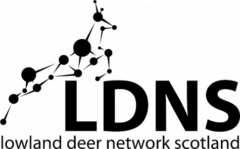As deer continue to populate the many established and the new green areas being created throughout the Scottish lowlands there is an increasing need to understand their behaviour in both a rural and semi-urban context.
There is a challenge in how best to manage deer in these areas to maximise the benefits they bring and minimise their negative impacts. Benefits include increased biodiversity; a source of venison; the opportunity for the public to see and enjoy deer; and an educational resource. Negative impacts include damage to nature conservation interests; damage to agriculture, woodland, forestry and private gardens; deer vehicle collisions (DVCs); and wildlife crime and other anti-social behaviour associated with deer.
At present, many landowners and managers in the Scottish lowlands do not recognise the need for any form of deer management as the deer in their region are not causing any immediate concern to their interests. However, there is evidence from habitat monitoring, census work and Deer Vehicle Collision data in particular that demonstrates an increasing need to plan for the management of impacts from deer whilst also recognising the benefits that deer bring.
The Code of Practice for Deer Management supports the voluntary approach to the management of Scotland’s wild deer. The publication of the Code is a requirement of the Wildlife and Natural Environment (Scotland) Act 2011 which places a duty on all who have wild deer on their land to manage them sustainably.
With a growing desire to reduce the impacts of deer on our lives, and the landscape a concerted effort is being made to modernize laws, improve education, increase training, widen deer management opportunities and to increase the infrastructure in the sector to make it easier for deer managers to distribute their venison. Opportunities and limitations are being considered in research work and projects, it is hoped that the combined processes make deer management across Scotland more fit for purpose and effective.
